-
-
-
- Z YELLOW
the city Sosnovy Bor and it’s Industrial Zone
R YELLOWLeningrad NPP (LNPP)– the largest nuclear power plant
on the Baltic Sea (4.000 MW) having four RBMK-1000 (Chernobyl design) reactors, which use the seawater at the flow-rate of 200 m3/sec.
Main environmental impact during the operation without accidents:
- Thermal pollution of sea ecosystems causes accelerated eutrification (or ecological ageing of the sea), depresses sea fish spawning, stimulates the growth of cyanobacteria and enhanced activity of toxicants. Mass fish perishing (numbers up to hundreds millions) in the NPP cooling system, which takes the gulf water without the fish protection barrier.
- Emissions of radioactive gases into the atmosphere and its changed electric conductivity lead to negative changes in the atmospheric processes.
- Every year decade’s tons of fish, which was bread in the warm water of the LNPP discharge channel, are supplied to shops of the region; its consumers are not informed about the fish origin.
Frequency of severe accidents with RBMK-1000 reactors, which result in trans-boundary pollution, is once per 100 years. Accidents at LNPP take place once every three years. During the accident of 1975 a fuel assembly got burned, one of the 1693 reactor channels lost its integrity. In accordance with expert estimation up to 1.5 mln. Curie was released into the ambient air. The background gamma level in the area grew by hundred times. Local population was not informed about the health threat. The radioactive contamination registered in Finland.
LNPP Unsolved problems:
- Absence of acceptable solutions for the long-term isolation of spent nuclear fuel containing Plutonium-239, which continues to be hazardous for the environment during hundreds of thousand years.
- Lack of money (up to $ 3 billion) for the safe plant decommissioning after its lifetime expires.
- Unavailability of independent monitoring of nature and people’s health in the region subjected to the most dramatic impact of nuclear facilities.
R YELLOW
R YELLOWMain environmental impact during the operation without accidents:
Thermal pollution of sea ecosystems causes accelerated eutrification (or ecological ageing of the sea), depresses sea fish spawning, stimulates the growth of cyanobacteria and enhanced activity of toxicants.
R YELLOWMass fish perishing (numbers up to hundreds millions) in the NPP cooling system, which takes the gulf water without the fish protection barrier.
R YELLOW Temporary storage of spent nuclear fuel (SNF) of LNPP is used to cool and isolate from the environment more than 30 thousand fuel assemblies spent in the reactor (4.000 t). Up to 20 t of supertoxic Pu239 (half-life period of 24 thousand years), which SNF contains, will require its eternal isolation from the environment. There are no environmentally and economically acceptable technologies for its processing or safe disposal.
R YELLOW
R YELLOWThe turbine Shop of 1st and 2nd units of LNPP
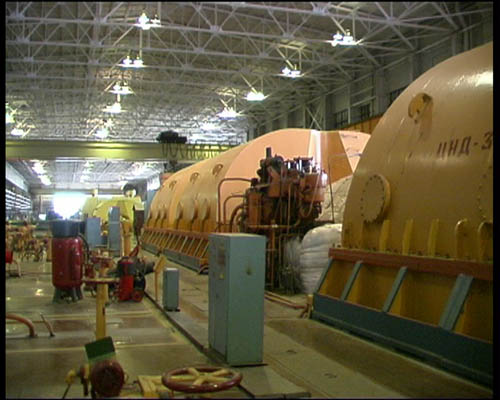
3 энергоблок ЛАЭС
R YELLOW4th unit of Leningrad NPP
R YELLOWLeningrad NPP cooling water inlet for the for the 3d and 4th units
R YELLOWLeningrad NPP cooling water outlet from 3d and 4th units
R YELLOW
R YELLOW
-
-
-
-
-
-
-
-
-
-
-
-
-
-
-
-
-
-
-
-
-
-
-
- R YELLOW
Nuclear submarine reactors of different types developed at the Alexandrov Research Institute of Nuclear Technology (NITI) are experimentally tested in the institute.
Main environmental impact during the operation without accidents: cooling water from the reactors, which is discharged into the Baltic Sea, is the main regional supplier of radionuclides Co60, Mn54, Cs137.
NITI most serious accidents:
The core was molten and a reactor top lost its integrity (1972);
Thermal explosion (1979) of a component in the reactor emergency cooling system (water tank) resulted in the building demolition. Two persons were killed.
Unsolved problems:
unavailability of public information about the normal-operation and accidental impact from nuclear facilities (operating and developed) on the health of nature and people and absence of open discussions of programs for safe decommissioning of old reactors and solution of spent nuclear fuel problems.
-
-
-
-
-
-
- R YELLOW
The area of Leningrad NPP -2 construction (2 units with VVER-1200 reactors and 4 cooling towers).
Leningrad NPP-2 (LNPP-2) with first two reactors VVER-1200 (1200 MWe), which cost $ 6 billion, is under construction next to the old LNPP. It is planned to build 6 power units.
Main impact on the environment: daily release of seawater after 150m-high 4 cooling towers (for two power units) is up to 100.000 t.
This will lead to the soil salinization in the area. Acidic fallouts are possible due to the reaction between emissions from LNPP-2 cooling towers and oxides of nitrogen, phosphorus, fluorine, etc., which get into the atmosphere from Estonian power plants using oil-shale as fuel; combined with emissions from aluminium, silicon and other plants planned in the neighborhood. It is also possible that cooling towers will disperse hazardous sea pollutants and stimulate radioactive fallout having the source at LNPP-1. This can cause the damage to pine forests, residents of Sosnovy Bor and thousands gardening communities.
LNPP-2 is a much more expensive source of power than refurbished and reoriented to the steam-gas cycle heat and power stations of the region, which operate on gas. Their modernization could bring the energy output in the region to a higher level (without increased gas consumption) than a possible LNPP-2 production.
Unsolved problems:
Absence of technological solutions for the long-term immobilization (reprocessing) of spent nuclear fuel.
No systematic analysis of safety provisions for the new and old NPPs taking into account their simultaneous operation.
No market for economic competition between different power sources and no ways of public influence on the decisions about the power sources.
-
-
-
-
-
-
-
- R YELLOW
The unit for the reprocessing Leningrad NPP solid radioactive waste (RW) was brought to the stage of construction on the LNPP territory without the mandatory environmental examination. It is planned to reprocess many hundreds tones of RW per year.
R YELLOWPlant for melting metallic radioactive waste ECOMET-S
– the largest in Europe (6.000 t/year). The plant belongs to the private company; it is in operation on the territory of RADON plant and LNPP since 1996 without the mandatory environmental examination. The company brings radioactive metal for reprocessing from other regions of Russia. It is planned to increase its capacity to 10.000 t and import radioactive metal from other countries.
ECOMET-S supplies the processed metal to the world market without informing about its origin and restrictions for use.
Main impact on the living environment during the normal operation – radionuclide emissions into the atmosphere. Geneticists have registered the frequency of cytogenetic malformations in needles and seeds of pine trees growing near ECOMET-S, which is 2.8 times higher than 30 km to the East
repeated explosions in the melters resulted in deaths (3 persons in 2005) and disabilities of operators.
Unsolved problems:
- Absence of independent control of the metal supplied to the world market; users get no information about the source of its production.
- Concentration and storage of RW from all over Russia on the Baltic coast.
R YELLOW
Storage of liquid radioactive waste (LRW) of LNPP is on the LNPP territory; it was designed to isolate LRW from the environment in special containers. 18.500 m3 of LRW has been accumulated after 33 years of operation.
R YELLOW
Incineration unit for radioactive waste (RW) of LNPP was brought to the stage of construction on the LNPP territory without the mandatory environmental examination. It is planned to burn hundreds tones of incinerable radioactive waste per year.
-
-
-
-
-
-
-
-
-
- R YELLOW
Specialized plant RADON – regional facility for North-West Russia, which stores solid (more than 60.000 m3) and liquid (1.200 m3) medium- and low-level radioactive waste. The RW is kept for temporary storage in surface concrete buildings-boxes. The facility is in operation since 1962. The exposure dose rate near walls of some storage facilities is 200 times higher than the background level.
After water extinguishing of fires (1976, 1979), which spontaneously started in the storage facilities, the groundwater near them got contaminated with biological contaminants H3, Cs137, Sr90 and supertoxic Pu239.
Unsolved problems:
Unavailability of storage space for the disposal of new RW, also in case of an emergency situation or decommission process at LNPP.
-
-
-
-
-
- S BLUE
Cable for the export of nuclear electricity on the Baltic seabed from Leningrad NPP to the countries of the Baltic Region (Finland, Sweden, Estonia) is promoted by BaltEnergo, a daughter company of Rosenergoatom. The project is supported by the government of Russia; it is developed in absence of the mandatory environmental examination. Cost of the project € 300 mln. BASEL, the association of Swedish industrial consumers of electricity, is ready to pay €4 billion for the electricity during 15 years. Talks about the export of nuclear electricity are in progress in Estonia.
Hazards of the project: LNPP power unit, which has the expired design time limit, will produce energy for export. It is equivalent to the yearly import of about hundred tons of SNF and high-level waste to Baltic Russia, the problems of long-term safe disposal of which have not been solved. The project will contribute to a further lifetime extension of an old LNPP power unit, which does not meet the safety requirements of the countries, to which its energy will be exported.
S BLUE
The Harbour Sosnovy Bor (planned)

-
-
-
-
- H RED
Baltic Silicon Valley – It is planned to develop a project for the world-largest chemical plant for the production of polycrystalline silicon (5000 t/year with a perspective for 20.000 t/year) in the town of Sosnovy Bor. Cost of the project is $370 mln. It has been approved by the regional and federal authorities and planned for implementation in the period of 2008 - 2012 on a 40 ha site. The power-intensive technology requiring 500 MW (half of the RBMK-1000 reactor capacity) was sited by project developers close to Leningrad NPP.
Its raw material is metallurgical silicon, which will be shipped from the Ural region of Russia, also imported from Norway and Brazil.
The products will be used by electronic industry and solar engineering. The project is implemented by a group of companies including OAO ‘Baltic Silicon Valley – International project PoliSiL’ and JSC ‘Project Engineering Company’.
Today strategic partners in the project are FGUP ‘Krasmash’, RF Sberbank, Concern ‘Titan-2’, FGUP “Efremov NIIFA”, JSC ‘Kriogenmash’, and others.
Hazards of the project:
atmospheric emissions of hydrogen chloride will result in acid rains and growth of cancerous diseases.
-
-
-
-
-
-
-
-
-
-
- S BLUE
Port in Batareynaya Bay for the export of 15 mln. oil products ($ 600 mln.) was formally founded on 19 July 1997 on the territory of wetland reserve “Lebiazhie” having the international status. The project of “Surgutneftegaz” Company was supported by the Governor of Leningrad Oblast and Government of Russia as a political alternative to the ports built by the USSR, which after its collapse have become a component of Lithuania and Estonia transport system.
The territory of Lebiazhie reserve was cut in order to provide for the oil port construction outside the boundaries of the nature-protected territory. In spite of the governmental pressure “Surgutneftegaz” never started the port development, but there has been no formal cancellation of the project.
If the project is resurrected, the port operation will destruct the resting places of swans and other migrating water birds.
The first stone – the symbol of the beginning of the harbour construction
S BLUE
The ceremony of first stone – the symbol of the beginning of the harbour construction was on 19 July 1997 on the territory of wetland reserve “Lebiazhie” having the international status.
-
-
-
-
-
-
-
-
-
-
-
-
-
-
-
-
- N GREEN
C GREENNGO Green World Information office is in the community centre of village Vistino. The main goal of GW activity in Vistino is:
- obtaining, analysis and distribution of information about the new terminal projects in Luga bay;
- involving the residents and authorities of the Region in activities for protection of nature and sustainable stile of life Indigenous population of the South coast of the Gulf of Finland;
- saving marine ecosystem of the Baltic Sea, the unique nature reserves of the south coast of the Gulf of Finland;
Address of the center: Izhorskaya Street, Community Centre Vistino village, Leningrad Oblast, Russia
Head of the Center: Valentina Konstantinovna Petrova, phone/fax +7 81375 67119, contact person Eugenia Baula, mob. phone +7 921 392 1973
Another centres:
Lebiazhie,
Sosnovy BorNGO Green World office in Sosnovy Bor
is the single non-governmental, non-profit charity environmental organization in the classified nuclear zone (80 km to the west from St. Petersburg), on the south coast of the Gulf of Finland, Baltic Sea.
The main goals of GW activities:
- Involving the residents and authorities of the Region in activities for nature protection and sustainable style of life;
- Saving marine ecosystem of the Baltic Sea, the unique nature reserves of the south coast of the Gulf of Finland;
- Further co-operation with environmental NGOs.
- Main objects monitored by GW
- Lebyazhiy (Swans), Kurgalsky Peninsula, - the international Ramsar Convention sites and Kotelsky Natural Reserve;
- The nuclear facilities of Sosnovy Bor with the biggest Nuclear Power Plant in the Baltic Sea region.
The detail information:
greenworld.org.ru ,
decomatom.org.ru
Address for the visitors: office 12, Solnechnaya Street 18, Sosnovy Bor, Leningrad oblast.
Address for the mails: P.O. Box 93/7, Sosnovy Bor 188544, St. Petersburg region, Russia,
Phone/fax.: +7 81369 72991
Mobil: +7 921 745 2631.
E-mail: bodrov@greenworld.org.ru
Another centres:
Vistino,
Lebiazhie
-
-
-
-
-
-
-
-
-
-
-
-
-
-
-
-
-
-
- N GREEN
Lebyazhy – wetland reserve of international value protected by the RF laws and international Ramsar Convention, which protect water birds migrating along the White Sea – Baltic Sea route. Area of the reserve is 6.300 hectare. Up to 20 thousand swans and other water birds stop there for rest during the spring and autumn migration. Dozens of bird species are entered in the Red Books.
In Lebiazhy it is prohibited: to hunt, to build, to disturb coastal plant and animal communities, use motor boats after the ice melts until 25 May and from 15 September till the sea freezes. In the period of 20 April - 15 July it is also forbidden to visit reed-beds; driving and use of boats is restricted to roads and permitted waterways.
Kotelsky Nature Reserve Kurgalsky Peninsula Unsolved problems of Lebiazhi:
- higher risk of coastal water pollution with oil products, as the shipping on the Gulf of Finland becomes more intensive;
- more pronounced recreation load combined with the simultaneous reduction (approximately 2 times) of the Lebiazhy reserve territory. The territories, which were cut from the reserve, are attracting potentially hazardous projects (oil port in Batareynaya bay), building of cottages along the shoreline;
- shoreline erosion caused by the excavation of sand on the sea shoal in front of Lebiazhy (London sand-shoal) and unrestricted entrance of cars with holiday-makers.
There is a threat of losing natural values of Lebiazhie due to the inefficient territory management.
-
-
-
-
-
-
-
-
-
-
-
-
-
-
-
-
- N GREEN
Kotelsky Nature Reserve
complex reserve of regional level having the area of more than 12.000 ha. It comprises picturesque lakes of glacier origin with exchangeable water: Kopanskoe, Glubokoe, Babinskoe, Khabolovo, Sudachie, as well as the part of the Gulf of Finland.
The lakes have rich fish population - perch, pike, roach, carp and others. The Peypia stream flowing from Lake Kopanskoe has Baltic trout and European pearl oyster.
Forests around the lakes are the habitat of elks, roedeer, hogs, bears, foxes and badgers. Rare bird species can be seen here: grey crane, golden eagle, sea-eagle, fish-hawk and others. Banks of the lakes are the favorite recreation place for people who come here for the rich harvest of berries and mushrooms.
It is prohibited in Kotelsky: any tree felling in the reserved area, grass burning and camp fires outside organized sites. Car parking is forbidden off the official roads, also in the water protection zone of lakes and rivers, excluding the designated locations.
Lebiazhy Kurgalsky Peninsula Unresolved problems of Kotelsky:
- unavailability of public information about its boundaries and rules of behavior on this nature protected territory;
- absence of efficient enforcement of the environmental protection laws, norms and rules acting on the Kotelsky territory;
- low level of environmental awareness of campers and holiday-makers (fires, household garbage, dumps and unauthorized car parking);
- irresponsible strategy of regional authorities to develop hazardous and “dirty” projects on the adjacent territories – aluminium plant, nuclear power plant with cooling towers, and a number of others.
- New socio-economic situation came into being after the Soviet Union disintegrated and East European countries entered the European Union. A huge port complex started to shape out on the South coast, in Luzhskaya bay, – a transport corridor between Russia and European Union. The export of non-renewable resources (gas, oil, coal) and electricity is stimulated from Russia to Europe. The Russian side more and more frequently shows the readiness to accept radioactive, nuclear and other waste.

-
-
-
-
-
-
-
-
-
-
-
-
-
-
-
-
-
-
-
-
-
-
-
-
- N GREEN
«Kurgalsky Peninsula» – wetland reserve of international value, protected by the RF laws and international Ramsar Convention. Area of the reserve is about 60.000 ha. It is the model area of coastal landscapes typical of the South Coast of the Gulf of Finland. The area has the richest biodiversity in Leningrad Oblast. More than 200 species have been entered into the Red Books.
Protected are the nesting and resting places of local and migrating water birds, as well as the lairs places of grey seals. The coastal shoals host fish spawning places; they also are the zone of seawater self-purification.
It is prohibited in «Kurgalsky Peninsula»: to hunt on the territory of KP around the year and to fish from 15 April till 15 June.
LebiazhyKotelsky Unsolved problems of «Kurgalsky Peninsula»:
- Higher risk of the coastal waters contamination with oil products resulting from intensified port development and shipping in Luzhskaya bay;
- Increased factor of disturbance for the colonies of fish and seals and higher risk of forest fires due to the growing recreation load accompanying the construction of ports in Luzhskaya bay;
- Depleted biodiversity as a consequence of industrial logging on the KP territory (40 th. m3 in 2007);
- Wildlife (animals and birds) damaged by the bombing exercise at the military shooting range located on the KP territory.
- There is a threat of losing natural values of Kurgalsky peninsula due to the inefficient environmental management of this territory.
C GREENGREEN WORLD Center of ecology and culture in township Lebiazhie carries out the nature protection and history-and-culture education programs.
Some, most relevant projects with the Center participation:
- reconstruction of historically authentic female costumes of indigenous population of the South Coast of the Gulf of Finland (supported by the Consulate General of Finland in St. Petersburg, 2005);
- prevention of sale of historical relics of the Krasnaya Gorka Fort (together with Lebiazhie deputies and representatives of political parties from Sosnovy Bor);
- establishment of the local nature protected territory “Bianki meadow”.
Address of the center: Stepanjana Street 13, Lebiazhie high school, township Lebiazhie, Leningrad Oblast, Russia
Head of the Center: Alexander Senotrusov, mob. tel. +7 950 00 82 83 33 or +7 911 97 56 951
Another centres:
Vistino,
Sosnovy Bor
-
-
-
Trainloads of ammunition drowned in Bolsheizhorskoe Lake during World War II. The ammunition evacuated from Tallinn naval base was drowned in the lake under the threat of capture by advancing Nazi troops in the second half of 1941.
The lake is guarded by the military. It is necessary to evaluate the risk of possible negative consequences for the health of people and wetland reserve Lebiazhie in case of detonation, also in the conditions of natural deterioration of shells, which have stayed in water for more than 60 years. The Baltic Sea and Lebiazhie reserve are a few hundred meters away from the lake with submerged ammunition.
I GREEN
Church of the Lotsmanskoye (Pilot’s) village
-
-
-
- Z BLUE
Gorky harbour area
-
-
-
- Z BLUE
S RED
Forest terminal for the export of logs has been built in the mouth of the Luga River. The terminal belongs to the Factor Company. Supported by regional authorities, the company carries out industrial logging and export shipments of the forest cut on Kurgalsky Peninsula, the wetland reserve having the international status. In 2007 about 40.000 m3 logs from the indigenous forest protected by the legislation of RF, Leningrad Oblast and international Ramsar Convention cut and exported to Europe.
S RED
JSC Rosterminalugol' Coal Terminal for the coal export 8.000.000 ton per year
-
-
-
R YELLOW
Planning Industrial Area for the Aluminium Plant near Berezniaki village
O GREEN
Berezniaki village
S BLUE
Fishing quay, dock of the fishermen collective farm Baltica. Fishing is the main occupation of the small indigenous nation, Izhora people, the traditional trades and lifestyle of which are to be protected by the RF Act “On the guarantees of rights of small indigenous nations of the Russian Federation" of 30 April 1999, N 82-FZ. Deep dredging for the Port of Ust-Luga disturbs and spreads toxic and radioactive bottom sediments contaminated by the Chernobyl fallout. This destroys spawning fields, contaminates the plankton and fish of Luzhskaya Bay. It undermines the traditional occupation of fishing, which was pursued by local inhabitants for centuries. The fishing fleet of Baltica collective farm has shrunk by dozens of times. Fishing is at the brink of extinction.
 Рыбный порт когда-то процветал
Рыбный порт когда-то процветал
, теперь влачит жалкое существованиеStainless Steel Plant, planned by Indian company Jindal Stainless Ltd. The project supported by the Governor and Government of Leningrad oblast. It is planned to build the plant in the «Phosphorite industrial zone» of Kingisepp rayon, not far from the Luga River. Production capacity of its first stage is 400.000 t of stainless steel ingots per year. Cost of the project is up to $90 million. Vicinity of the port and Leningrad NPP are the main factors attracting Indian business to the South coast of the Gulf of Finland.
Hazards of the project:
Continued utilization of power from Leningrad NPP will result in the hundreds of tons of nuclear and radioactive waste concentrated in the storages near the Baltic Sea shore. The problem of a long-term disposal of this waste has not been solved, which means its export to future generations.
The cost of all potentially hazardous projects, which were promoted for implementation on the South Coast of the Gulf of Finland during last 10 years, is estimated as 20 billion Euros. It means that more 100.000 Euro will be invested into the environmental devastation of each meter of the 180-km shoreline from the border with Estonia to St. Petersburg.
Along with that, tourism and other business activities, which are oriented on using renewable resources and advantages of unique nature, are restricted because of the so-called border zone status introduced by Russian authorities.
O RED
Kotel’sky village – is the registration place of the Baltic Aluminium Plant
 Market Place of the Kotel’sky village
Market Place of the Kotel’sky village
-
-
-
Radioactive contamination of the system for drinking water supply in township Lebiazhie (5000 inhabitants) was detected by chance in 1989. Tens of years before that, this groundwater contaminated with radium (Ra226 и Ra228) was consumed by people in dangerous concentrations. Without knowing about it employees of the local water station were exposed to 11 rem/year dose rates, which is higher than the exposure of NPP employees.
In 1990 Lebiazhie was connected to a different drinking water system, but it continues to use old pipes, deposits in which have the capacity of equivalent dose 15 µSv/h (100 background levels). After the frequent failures at the main water pipe are rectified, inhabitants get the muddy water enriched with radionuclides.
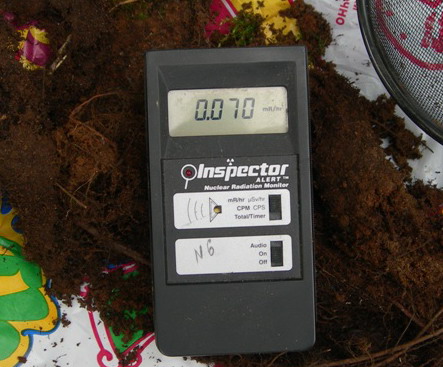 The experts investigate the background level of radiation in Lebyazhy
The experts investigate the background level of radiation in Lebyazhy


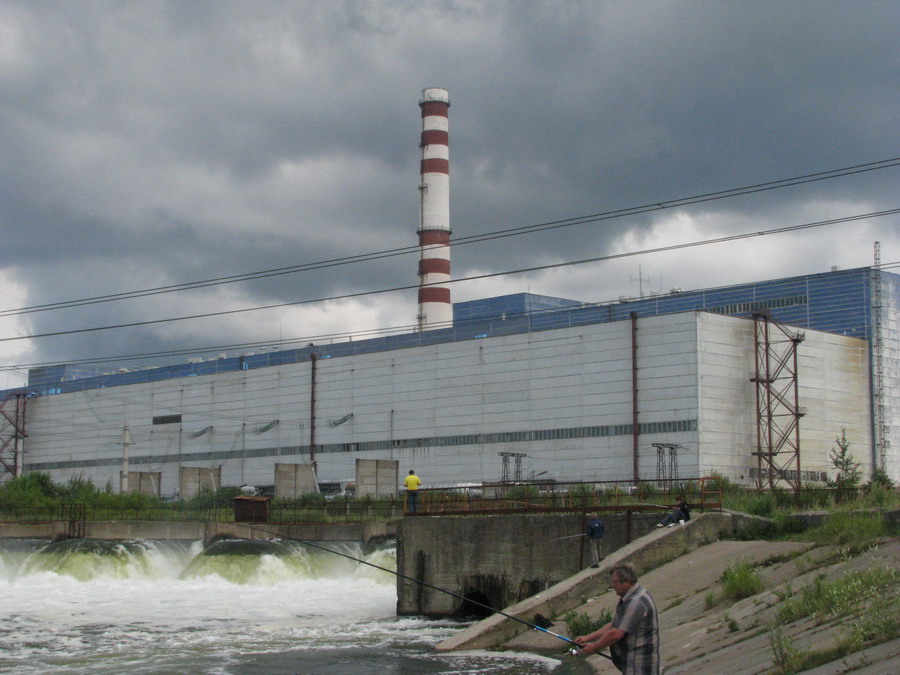

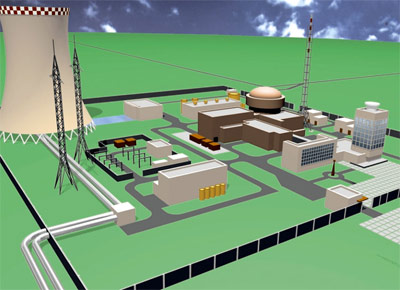

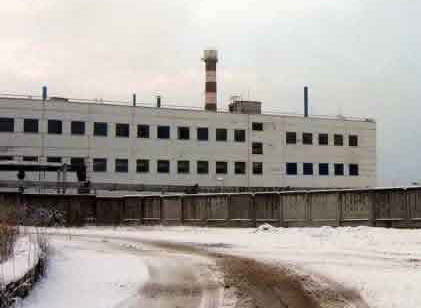








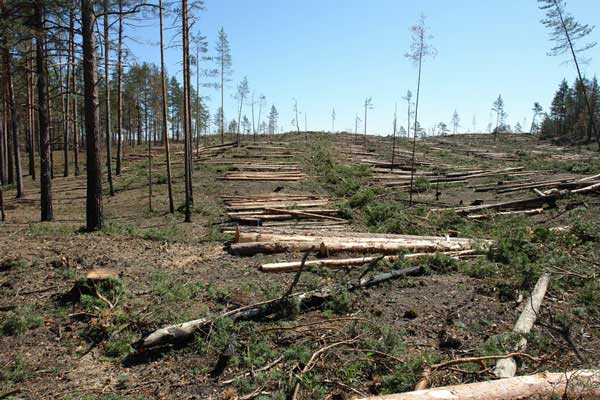



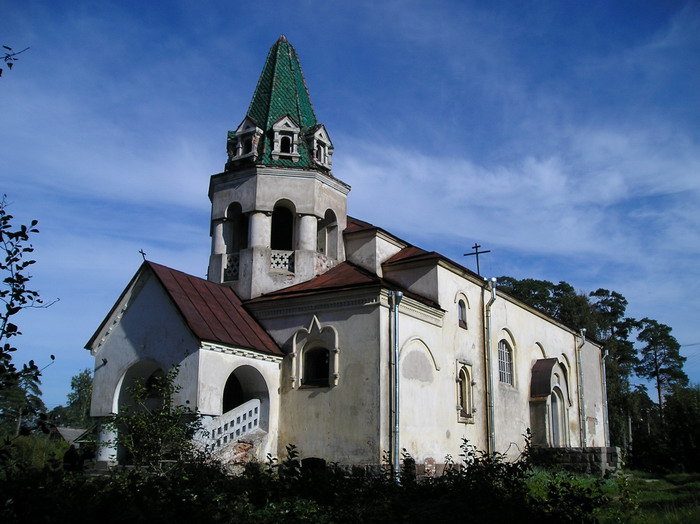
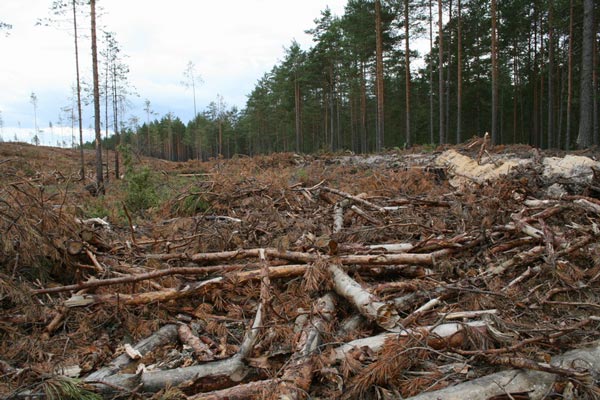


 Рыбный порт когда-то процветал
Рыбный порт когда-то процветал 
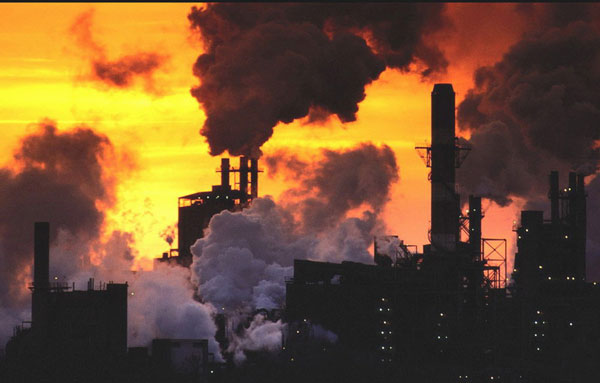
 Market Place of the Kotel’sky village
Market Place of the Kotel’sky village The experts investigate the background level of radiation in Lebyazhy
The experts investigate the background level of radiation in Lebyazhy